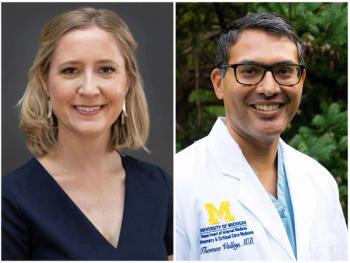
Patient experience with immunotherapy: 4 things health execs need to know
CAR T-cell therapies and other immunotherapy give this oncologist’s cancer patients hope for a better quality of life.
New game-changing therapy is offering hope to cancer patients, according to one pediatric oncologist.
Kara Davis, DO, a pediatric oncologist at the Lucile Salter Packard Children’s Hospital at Stanford, is treating patients with chimeric antigen receptor (CAR) T cells and other immunotherapies including checkpoint inhibitors.
With immunotherapy, Davis is hopeful that her 11-year-old patient-who had spent most of three years in the hospital, during which time he experienced three relapses and underwent a bone transplant-could have a longer, improved quality of life with a possible access to a cure.
Here are four things healthcare executives should be aware of when it comes to the patient experience with immunotherapy:
1. Reducedside effects.
The good news with side effects is they’re much less likely to impact patients undergoing immunotherapy than those being treated with chemotherapy, says Nabil Saba, MD, director of the head and neck medical oncology program at the Winship Cancer Institute of Emory University.
Patients typically receive treatments every two to three weeks and the treatment itself consists of the patient receiving the medication via an intravenous drip for 30 to 60 minutes. Most of the patients he treats report feeling better once taking the treatment.
Only 20% of patients being treated with immunotherapy experience noticeable side effects. Some common immunotherapy-associated side effects include nausea, fatigue, and diarrhea. Fewer than 5% of patients will experience much more serious side effects, such as liver failure, activation of an autoimmune disease, colitis, or death, says Saba.
Payers need to be aware of these side effects, even if they’re relatively rare, he says, because the impact can be increased hospitalizations.
2. Need for socioeconomic support.
Patients and their families need socioeconomic support from providers and payers, says Davis. Patients involved in clinical trials have stipends for transportation, lodging, and other living expenses covered as research study-related expenses; when patients receive immunotherapy outside the confines of a clinical trial, they need to finance their own living expenses or receive support from provider organizations or stay at Ronald McDonald House or other charities, she points out.
Davis notes that Stanford provides support for as many patients as possible, but as more patients pursue immunotherapy in the future, those resources will be increasingly stretched.
3. The promise of future research.
Currently, there are studies being conducted to determine the appropriate timing to introduce immunotherapy with cancer patients, says Davis. If those studies determine that introducing immunotherapy earlier can prevent future relapses, then the market for immunotherapies will open up. Further, if it turns out that immunotherapy reduces hospitalization-related costs, it may be that immunotherapy comes out as similar to or even less than the cost of chemotherapy, she adds.
4.Streamlined referrals to immunotherapy experts.
Davis embraces a Centers of Excellence-type model for treating patients with immunotherapy, but she would like to see payers make it easier for patients to get referrals from their local oncologists to experts in immunotherapy.
Unfortunately, access to immunotherapy continues to be a challenge for some patients, including one covered by Medicaid in neighboring Nevada, she says. This particular patient was unable to access treatment with Davis at Stanford because she couldn’t travel-and Medicaid also wouldn’t cover the treatments.
Stanford is working to build stronger relationships with payers from nearby states and Davis also hopes its efforts to partner with other states’ Medicaid programs are successful.
Newsletter
Get the latest industry news, event updates, and more from Managed healthcare Executive.





















































